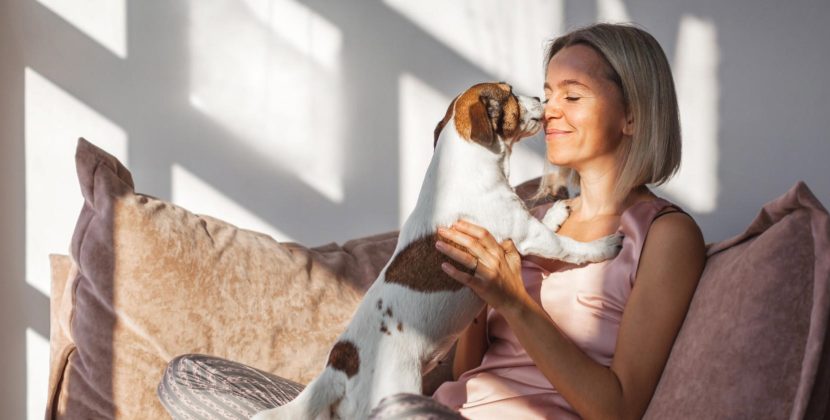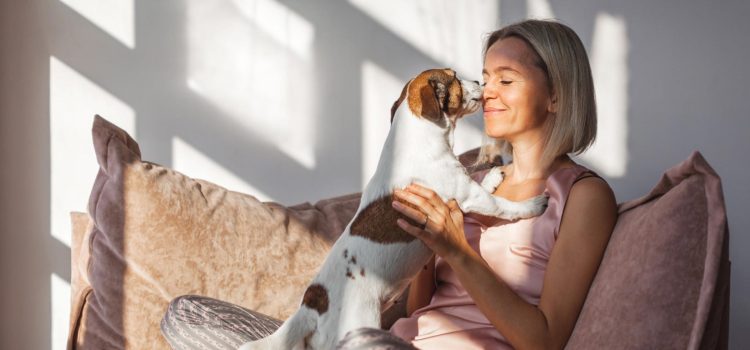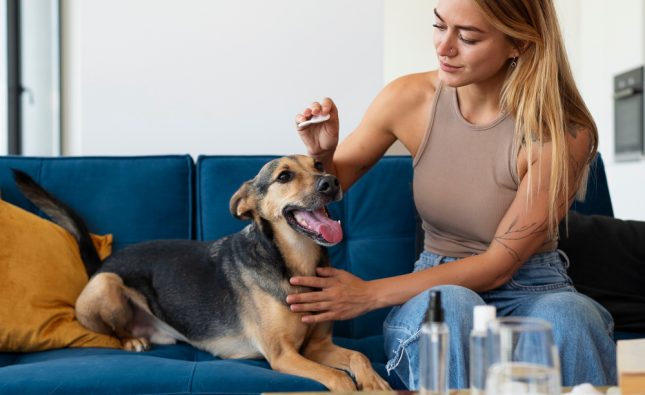
Introduction
When your dog gives you a wet, sloppy kiss, it can feel heartwarming and a little puzzling. Dogs lick for many reasons—from love and bonding to exploring their world. Learning the meaning behind your dog’s affectionate licks can help you strengthen your bond and respond the right way. In this guide, we will decode why dogs lick, explore common licking behaviors, and share tips so you and your pup enjoy every loving gesture. By the end, you’ll know exactly what your dog is trying to tell you with each gentle lick.
Puppy Love: Understanding Your Dog’s Affectionate Licks

1. Licking as a Sign of Affection
One of the most common reasons dogs lick humans is simple: love. Puppies lick their mother to show respect and ask for care. As adult dogs, they carry this habit into their relationships with people. When your dog licks your hand or face, it often means they feel deep affection and trust. Dogs release feel-good hormones like oxytocin when they lick, just as humans do when hugging. This bond-building lick is one of the sweetest ways they say, “I love you.”
2. Exploring the World Through Taste
Dogs experience the world with their mouths. Licking lets them sample new scents and flavors. Your skin holds traces of salt from sweat, bits of food, or interesting smells from the outdoors. When your pup gives you a quick lick after playtime or a walk, they may simply be curious about those new tastes. While this type of lick is not always purely affectionate, it still shows that your dog feels comfortable exploring you as part of their environment.
3. Attention-Seeking Licks
Have you noticed your dog paw at you and then lick you until you look their way? Many dogs learn that licking grabs attention. If you react—whether by petting them or talking—they know licking worked. Over time, they may use licks to ask for play, treats, or belly rubs. To manage attention-seeking licks, give your dog attention when they are calm, not only when they lick. This trains them to use gentler signals for affection.
4. Stress and Anxiety Licking
Sometimes licking can signal stress or anxiety. Dogs may lick themselves or objects repetitively when they feel nervous. If your dog licks you in a situation that seems tense—like car rides or vet visits—it could be a comfort-seeking behavior. Offering a calm voice, gentle pats, or a favorite toy can help soothe them. If anxiety licking becomes constant, consider consulting a veterinarian or behaviorist for support.
5. Grooming and Caregiving
In a pack, dogs lick each other to help with grooming. Mothers lick puppies to keep them clean and stimulate digestion. Adult dogs continue this ritual to care for their pack mates. When your dog licks you, they may be treating you like family, trying to groom you. This grooming lick is an expression of care and belonging. Accept this thoughtful gesture as a sign that you’re part of your dog’s inner circle.
6. Taste of Treats and Food Residue
A practical reason for licking could be tasty residue. If you just ate chips or applied scented lotion, your dog may be drawn to the lingering flavors. While much of their licking is about emotion and communication, it’s also about taste. To reduce food-driven licks, wash your hands after meals and avoid scented lotions your dog finds irresistible.
7. Health-Related Licking
Occasionally, licking can signal a health issue. Dogs sometimes lick wounds, itchy skin, or sore areas to soothe pain. If your dog focuses licks on one spot, check for cuts, rashes, or infections. Similarly, excessive licking of paws, carpets, or you might mean gastrointestinal upset or allergies. Regular vet checkups help catch these issues early. Treating any discomfort promptly keeps your dog healthy and reduces stress-related licking.
8. Understanding Age and Breed Differences
Different dogs lick more or less depending on age and breed. Puppies tend to lick more as they explore. Some breeds, like Labrador Retrievers and Spaniels, are naturally more affectionate and will lick often. Older dogs may lick less if they have dental issues or less energy. Knowing your dog’s breed traits and life stage helps you interpret their licking. Always tailor your response to your dog’s individual needs.
9. How to Respond to Your Dog’s Licks
When your dog licks you, respond in a way that reinforces healthy behavior:
- Positive Reinforcement: Gently pet or praise your dog when they give calm, affectionate licks.
- Redirect Unwanted Licks: If licks become too frequent or annoying, offer a chew toy or a lick-safe treat mat.
- Establish Boundaries: Teach a “stop” command and reward your dog when they pause licking.
- Stay Calm: Avoid pushing your dog away harshly, which may increase anxiety or licking.
By setting clear rules and rewards, you guide your dog toward balanced, happy licking habits.
Conclusion
Licking is a rich form of communication in the dog world. From tender grooming licks to playful attention-seeking gestures, each lick carries meaning. By learning why your dog licks—whether to show love, explore tastes, or cope with stress—you can deepen your bond and support their well-being. Remember to reinforce positive licking, redirect excessive licks, and watch for health-related signs. With a tad of patience and clear boundaries, you’ll decode every affectionate lick and enjoy a stronger connection with your pup. Embrace the puppy love and let your dog’s licks brighten each day!










